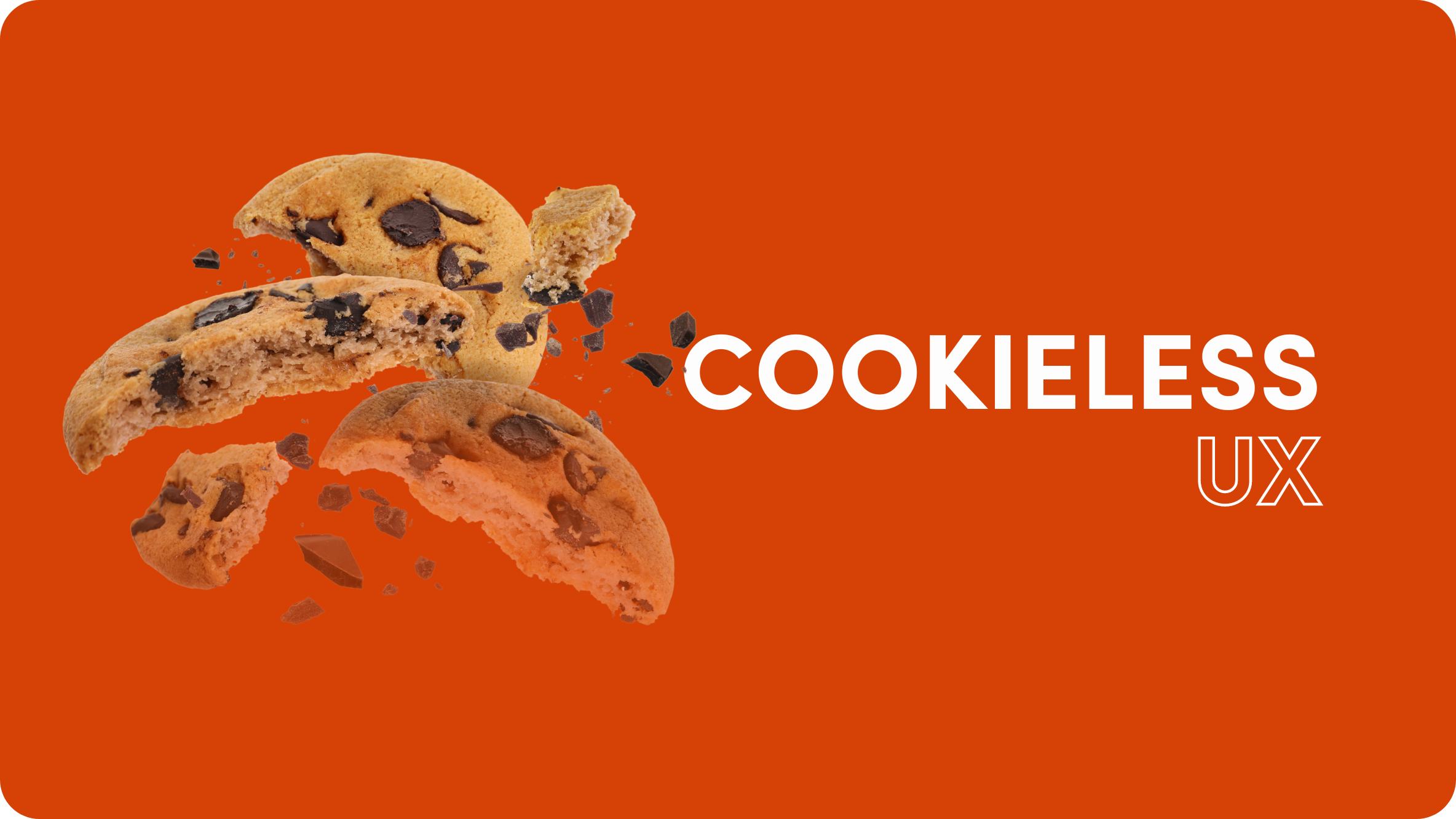Content Marketing Best Practices: How to Do It Right

Key takeaways
- Good content marketing starts with building detailed buyer personas. Dig into your audience’s pain points, motivations, and the way they speak to connect on a deeper level.
- Developing a strong content strategy ensures you’re not just throwing content out there randomly. Define your goals, content types, and how you’ll track success.
- Prioritize well-crafted high-quality content over quantity. Use data, AI tools, your internal experts, and user-generated content to create pieces that provide real value.
- Choose the key platforms where your audience hangs out, and tailor your content to each one. Go beyond promotion by participating and engaging with your community.
- Gather the right metrics, analyze your results, test variations, adapt as you go, and never stop learning.
As a marketing professional, you’ve probably got a million and one things on your to-do list.
But one thing you can’t afford to do is let your content marketing slip.
Upping your content game is one of the highest ROI things you can do in terms of marketing.
According to research from the CMI, content marketing can triple the number of leads generated compared to traditional outbound tactics, and it’s surprisingly budget-friendly costing 62% less.
Even small businesses can benefit from content marketing, seeing lead growth increased by 126% compared to those without a content strategy.
But how do you get your content marketing strategy up to scratch? The amount of info out there can feel overwhelming. That’s not to mention the conflicting advice…
Should you focus on written blogs or videos? Podcasts? Do you need to be everywhere on social media or focus on one platform? How do you narrow down to a target audience? Should you segment your audience or focus on one buyer persona?
While there’s no single secret to success, there are some best practices you can follow to increase your chances of creating a winning strategy.
15 Essential Content Marketing Best Practices
1. Figure Out Your Ideal Audience
The first thing you should do when planning your content is work out exactly who you’re trying to reach.
Don’t just say, “businesses in my area” or something generic like that. You need to be way more specific. That’s where buyer personas come in.
A buyer persona is a profile of your dream customer. Where most companies go wrong is focusing only on demographics like company size, location… the basics. A buyer persona should go deeper – their personality, their struggles outside of work, the stuff that actually drives their decisions.
In other words, you’re building up a story.
This works for both B2C and B2B. B2B buyers have specific pain points at work, and often they’re not the actual decision-maker. You need to target the specific needs of the B2B buyer, as well as other people involved in the process.
This is where data comes in handy. Use analytics to track what content people are interacting with. You can also survey your existing customers to find out common pain points and what led them to you.
The most important thing when creating buyer personas is to be as detailed as possible. This leads to better content. Rather than just a bland, generic blog post, you can write something that speaks directly to them, using the language they use, and providing information that they’ll find valuable.
And a final note on buyer personas – make sure to update them frequently as your customer base or their needs may change over time.
💡 Top tip: Don’t just listen – PARTICIPATE! Too many marketers get stuck in observation mode, analyzing social media comments analytics. Engage with your audience instead. Jump into the conversations and find out what people are saying first-hand.
2. Make A Plan
There’s no point in throwing content out there randomly and hoping it lands well. You need to come up with a content strategy that covers everything from the overall objectives to how you’ll track results.
- Set achievable goals: Define the specifics of what you want your content to achieve. Are you trying to get more leads? Boost website traffic? Knowing this lets you measure success more accurately.
- Decide on content types: It’s a good idea to offer different content for different folks. Some people prefer reading, others watching videos. Some like to receive emails, others might prefer social media posts. Work out which formats work best with your buyer personas and add these to your plan.
- Plan your promotions: It’s no good having a great blog if nobody knows about it. You can promote your blog, webinar, podcast, or whatever it might be on social media. Find out where your audience hangs out – LinkedIn, Twitter, etc. and drive traffic to your content. Be careful when promoting content through social media, as some platform algorithms punish external links in the main post. It might be better to post the link in the comments instead.
- Test and learn: Plan to run A/B tests on different versions of your content to find out what performs best. Keep a close eye on other analytics and gain insights that can help you course-correct.
💡 Top tip: Think like a publisher, not a marketer. A good approach is to plan for a series – like a long-running TV show. But your content shouldn’t feel like one long sales pitch, so plan a series of content that offers helpful insights, educational pieces, or entertaining content related to your niche.
3. Create Affordable, Yet High-Quality Content
People will be turned off by content that feels like it’s been made without any care or attention. That’s why you must prioritize quality. However, you still have to create content within the constraints of your budget.
One way to make sure you’re producing high-quality content that resonates is to analyze your existing data. Google Analytics and social media insights can show you what gets the most clicks, shares, etc. Use these content pieces as benchmarks for your new strategy.
You can also use time and labor-saving AI tools such as ChatGPT or Google Gemini, but use them cautiously. The quality of AI writing isn’t great, but they can be useful tools for brainstorming, outlining content, and even first drafts. But don’t simply post AI output – you still need to add a human touch to make it shine.
Another way to save money is to use the internal experts to write thought leadership pieces. Your coworkers probably know a ton about your industry and customers. Encourage them to contribute blog posts, do interviews, or star in short videos.
Sometimes the most simple and affordable content is best. Just look at Dollar Shave Club, a brand that went viral upon launch with a cheap, yet highly effective video and stone content marketing campaign.
💡 Top tip: Tap into the power of your existing customer base with user-generated content (UGC). It helps to build trust and authenticity. For example, you could launch a social media challenge asking customers to share photos or videos of themselves using your product, with a fun hashtag for tracking entries and a prize to boost participation.
4. Improve Your SEO
Search Engine Optimization (SEO) is an essential part of any good content strategy, but many businesses overcomplicate it.
In reality, SEO is pretty simple. It involves doing keyword research to figure out what people are actually searching for when they’re looking for info related to our business. Then you use those keywords all through your content.
There are some other technical elements, such as adding bits of code (meta tags) to your website and blog posts. Most modern content management systems make it easy to take care of these things.
Backlinking is another important element of SEO. Basically, it means getting other websites to link back to yours. It’s like a vote of confidence – search engines like Google see those links and think, “Hey, if other sites think this content is good, it probably is!”
Here are a few ways to get those valuable backlinks:
- Guest posts: Reach out to blogs and websites in your industry and offer to write a guest post for them. Include a subtle link back to your own website within the post or author bio.
- Broken link hunting: Find websites in your niche with broken links (those annoying 404 errors). Contact the site owner, let them know about the broken link, and suggest a link to one of your own relevant pieces of content as a replacement.
- Create infographics: A well-designed infographic packed with valuable data is highly shareable. Others in your industry are likely to post it on their sites or blogs, naturally including a link back to you as the source.
💡 Top tip: Once you’ve got some pieces of content that are high up in the search results, you can update them to keep them fresh. You can add new keywords to try and rank it even higher. Here at Outbrain, we have a Best Affiliate Programs blog post that gets updated every year. The most recent update got 25% more views just from a quick content refresh!
5. Grow Your Social Media Presence
It goes without saying that a strong social media presence is vital. But blasting out random posts left, right, and center is a waste of time and effort. Be selective about the platforms you use and the content you share.
Firstly, figure out where your target audience hangs out. LinkedIn is a no-brainer for B2B marketing or TikTok if you’re targeting a younger crowd. But sometimes it’s worth thinking outside the box – maybe the right kind of content could resonate with the TikTok kids and get them interested in your product, even if they’re not in your main target demographic.
The key thing is to make content that people actually want to engage with and share. Avoid plain product announcements and go for a phased launch that ramps up curiosity and interest, for instance. Apple are the masters at this, using secrecy and teasers to create a frenzy around new product releases. They’ll drop a cryptic tweet, or maybe just a sleek image with a date, and the internet goes wild with speculation.
💡 Top tip: Lose the corporate voice and show your brand’s human side on social media. For instance, you might want to embrace humor, memes, and a bit of snark (if it fits your audience). Wendy’s Twitter account is a great example of this. Alternatively, be a helpful expert if that’s a better fit for your market, delivering explainers, tutorials, and practical tips that solve audience problems in a friendly, human way.
6. Build, Segment, & Nurture Your Email List
Email might seem a bit old school, but it’s still one of the most effective ways to engage with your audience. The trick is getting people to sign up in the first place, then segmenting your lists.
How much you segment is up to you. Maybe you want to set up different segments for different buyer personas. Or it could be as simple as a new customer getting different emails to someone who’s been around a while. Segmenting is a good way to personalize the content you send out to your email list.
Once you’ve segmented your list, it’s time to send out some value-driven content. Make your emails stand out from the crowd by sharing insider tips, trends, and insights. People will open your emails if they actually look forward to receiving it.
💡 Top tip: Encourage people to engage and reply to your emails with questions or thoughts. You can get some great feedback this way. Just make sure that you always respond to any replies, as it helps to build a bond with your loyal customers.
7. Enlist Influencers
Teaming up with people who already have big online followings can help get more eyes on your content or products. Look for bloggers, YouTubers, podcasters, etc. who create content related to your product or service. It’s a great way to position yourself as a trusted brand.
However, make sure that the influencers are a good fit. If it feels inauthentic or forced in anyway, it can backfire and people will see right through it. It’s also a good idea to make sure you vet the influencers thoroughly first. The last thing you want is to align with an influencer who has a checkered past or holds unsavory views.
A good example of how not to do influencer marketing is Snap Spectacles’ pairing up with well-known actor Luka Sabbat. Despite a clear contract outlining multiple social posts, Sabbat only shared a single story and post. This blunder hurt both reputations, emphasizing the importance of authenticity rather than ‘forced’ partnerships. Choose influencers who genuinely love your product for organic enthusiasm and to avoid costly failures.
💡 Top tip: Go for multi-touchpoint content if you team up with influencers. Instead of just settling for a single post or mention, aim for a strategic collaboration that allows the influencer to showcase your product or service in multiple ways – tutorials, unboxing video, stories, etc.
8. Pay Attention To Analytics
Before you implement your content strategy, you should take the time to set out your goals and KPIs. Do you want more website traffic? More newsletter signups? Whatever you want to achieve, make sure you’re collecting the right metrics to measure your KPIs.
For example, let’s say the goal is to get more newsletter signups. You can collect data on how many views the signup form gets versus how many actually fill it out.
Key metrics for your content strategy might include:
- Unique Visitors: Shows overall reach and new audience growth.
- Pageviews: Tracks overall content engagement.
- Time on Page: Indicates if content is interesting and keeps people engaged.
- Engagement: Likes, shares, comments show which posts are resonating with your audience.
- Open Rate: Measures the effectiveness of your subject lines and if people are interested in your emails.
- Click-Through Rate (CTR): Shows if your email content is driving people to take action and visit your site.
💡 Top tip: Look for certain trends over time. Are things improving or getting worse? This shows the long-term impact of your efforts. Also look for sudden drops in traffic and dig deeper – could it be down to technical issues or has a competitor published a new series of blog posts that are more engaging and knocked you down the Google rankings?
9. Go Interactive
Interactive content can make a welcome change to standard blog posts and videos. Quizzes, polls, surveys, can all provide a fun and interesting break from the norm. If you can get people to participate with your content, rather than just consume it, then you’re onto a winner.
As the technology progresses and becomes more affordable, AR (augmented reality) and VR (virtual reality) experiences might become more viable. Maybe you can experiment with this type of content at an expo or live event and see if people are interested.
One of the biggest growth content websites of the last decade was Buzzfeed. One of the key drivers of their growth were the various personality quizzes offered on their website. These proved irresistible to their audience and saw them become an online media giant within a few short years.
💡 Top tip: If you send out a survey or poll, make sure to use the answers to direct your future content. For example, if a poll reveals a large portion of your audience struggles with a particular problem, you could create a series of helpful how-to guides or explainer videos addressing it. Or, let’s say your survey uncovers a common misconception about your product, then a myth-busting blog post or social media campaign can set things straight.
10. Optimize for Voice Search
More and more people are searching for stuff by talking to their phones or devices. It’s faster and more convenient than typing, especially if you’re on the go.
This means rethinking the way we write content online. Nobody’s going to say “Search for the best wireless headphones” to their phone. They’re more likely to ask something like, “Hey Siri, recommend some good noise-canceling wireless headphones for under $100”.
In other words, future SEO may be characterized more by long, natural-sounding sentences and phrases rather than short keywords and phrases.
💡 Top tip: Adding an FAQ section to your content can answer common customer questions that are optimized for voice search. Think about how people would ask their devices questions in a conversational way and base your FAQs on those.
11. Use AI for Improved Personalization
Most people agree that the targeted recommendations on Netflix and Amazon are pretty useful. An AI engine works out what you like based on previous viewing data and recommends other shows based on your tastes.
These days, there are tools that let you do something similar with your content. Instead of customers having to dig to find the right content or product, you can present it to them on a silver platter.
Outbrain ads use AI to predict audience engagement and recommend content in user feeds on the open web, as organically and contextually as possible. Great ads combined with targeted and personalized feeds are the perfect storm to capture the true attention of relevant audiences.
💡 Top tip: Surprise and delight your audience with hidden gems. AI can help you work out which unusual and novel content is most likely to make an impact with your audience – the type of things they might love, but would never have found on their own.
12. Be Consistent
In an ideal world, your content will build up a big fanbase that keeps coming back for more. To achieve that, you need to be consistent. A regular schedule will build anticipation and let people know when to check for fresh content.
Consistency is also important for building trust. If you vanish for weeks, then suddenly drop a random post, people will question whether you’re reliable and whether your offering is valuable.
It’s also important not to over-promise. Don’t say that you’ll blog daily if you can barely manage a weekly post. You’re better off delivering the occasional really high-quality post than a barrage of poor quality content.
💡 Top tip: Come up with a catchy name that fits your publishing schedule, such as “Tuesday Tips” or “Friday Wind-Down”. You can also commit to a weekly or monthly newsletter to round up all your latest content and news.
13. Leverage User-Generated Content (UGC)
We mentioned it earlier, but it’s such a useful way to get impactful content that it deserves its own section. UGC is one of the most effective ways to get audience engagement. Why? It feels more authentic and helps to build credibility and trust.
People trust other people who are like themselves. This means that UGC can be way more effective than ads. One of the most powerful things you can do is turn UGC into a form of ad. Instead of the usual sales pitch, you feature real people saying great things about your products.
💡 Top tip: Add an incentive to get UGC. You could offer people discounts or entries into a contest if they share a picture or video of themselves using one of our products with a specific hashtag. That way, those posts reach all their friends too, not just your existing followers.
14. Distribute Your Content Wisely
Your target audience jumps from channel to channel, screen to screen. Take the time to break down your content distribution so you’re covering all bases.
- Social media: Pick the platforms where your audience spends time (Facebook, Instagram, etc.). Adapt your content to match expectations for each one.
- Email newsletters: Perfect for nurturing existing leads and building a loyal following with deeper content dives.
- Partnerships: This could be:
- Guest blogging on websites in your niche
- Co-hosting a webinar with a complementary business
- Cross-promoting on each other’s social media
Another thing to pay attention to is optimizing your content for each platform. Here are a few tips:
- Image sizes: Each platform has different optimal dimensions so nothing gets weirdly cropped.
- Video formats: Landscape is standard, but square or vertical videos might perform better on mobile.
- Copywriting: Tweak your headlines and captions to grab attention on each platform (emojis on Twitter are fine, maybe not so much on LinkedIn).
- Design: Use tools like Canva or similar. These offer easy design templates for social posts, simple image resizing, etc.
- Scheduling: There are plenty of tools to ease the burden of scheduling, including Hootsuite, Buffer, etc. Batch your content in advance, so you’re not scrambling to post at the last minute.
💡 Top tip: Don’t neglect niche communities, as they can be the most engaged of all groups online. Look for subreddits, Facebook Groups, and forums related to your industry and become an active participant in those groups. Remember to offer value though and never spam them with promotional content.
15. Optimize for Mobile
Last, but not least, it’s official – we live in a mobile-first world with more than 50% of web traffic coming from mobile devices.
For this reason, you need to make sure your content is mobile-friendly. Modern website builders often do the technical stuff for you. Your focus is on clean design (easy-to-read text, tappable buttons) and keeping things easy to navigate and quick to load. Nobody wants to wait ages for a page to load on their phone.
💡 Top tip: Create “snackable” content, where people can get the key takeaways at a glance or a quick scroll. This means formatting your content to be scannable – break up text with headings, bullet points, and images to guide the eye. Make sure that the design is “thumb-friendly” for navigation with large, clear buttons.
Good Content Isn’t Optional
If you want to cut through the online noise, a strong digital strategy based on content marketing best practices isn’t a “nice to have”, it’s a must.
The good news is, it doesn’t have to break the bank. By being strategic, focusing on quality, and using the power of data and technology, even small businesses can see big results.
The world is waiting to hear your brand’s unique story – so get out there and start telling it!











